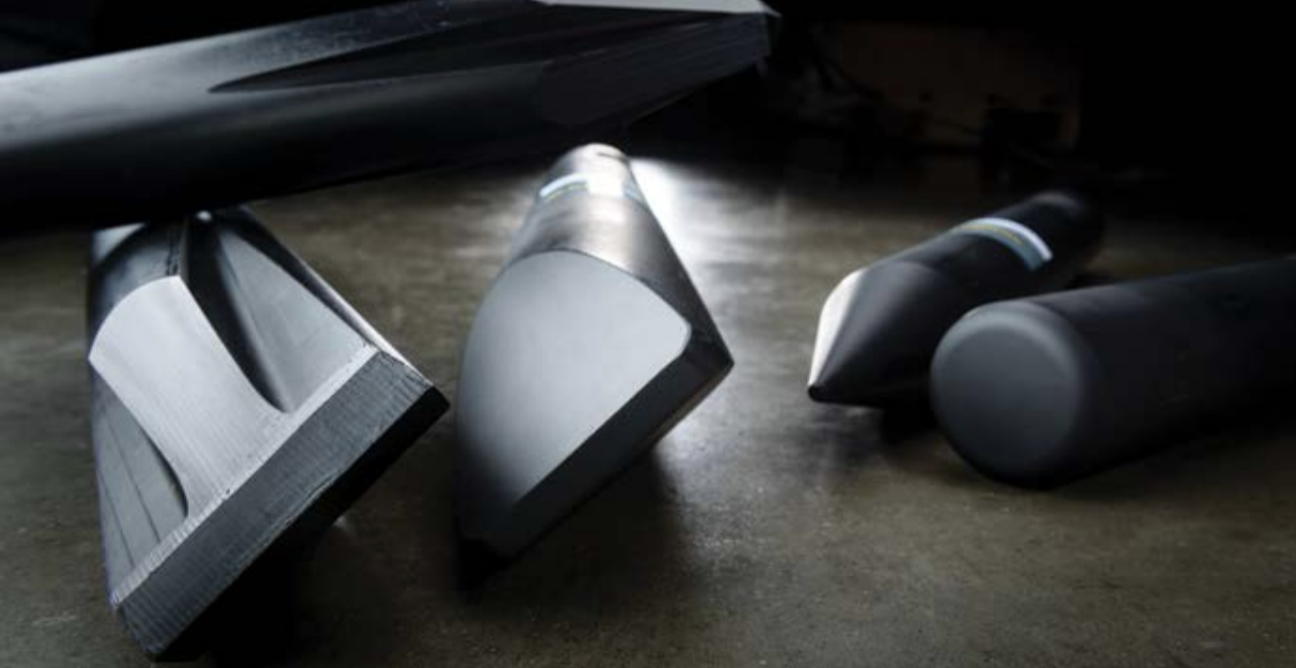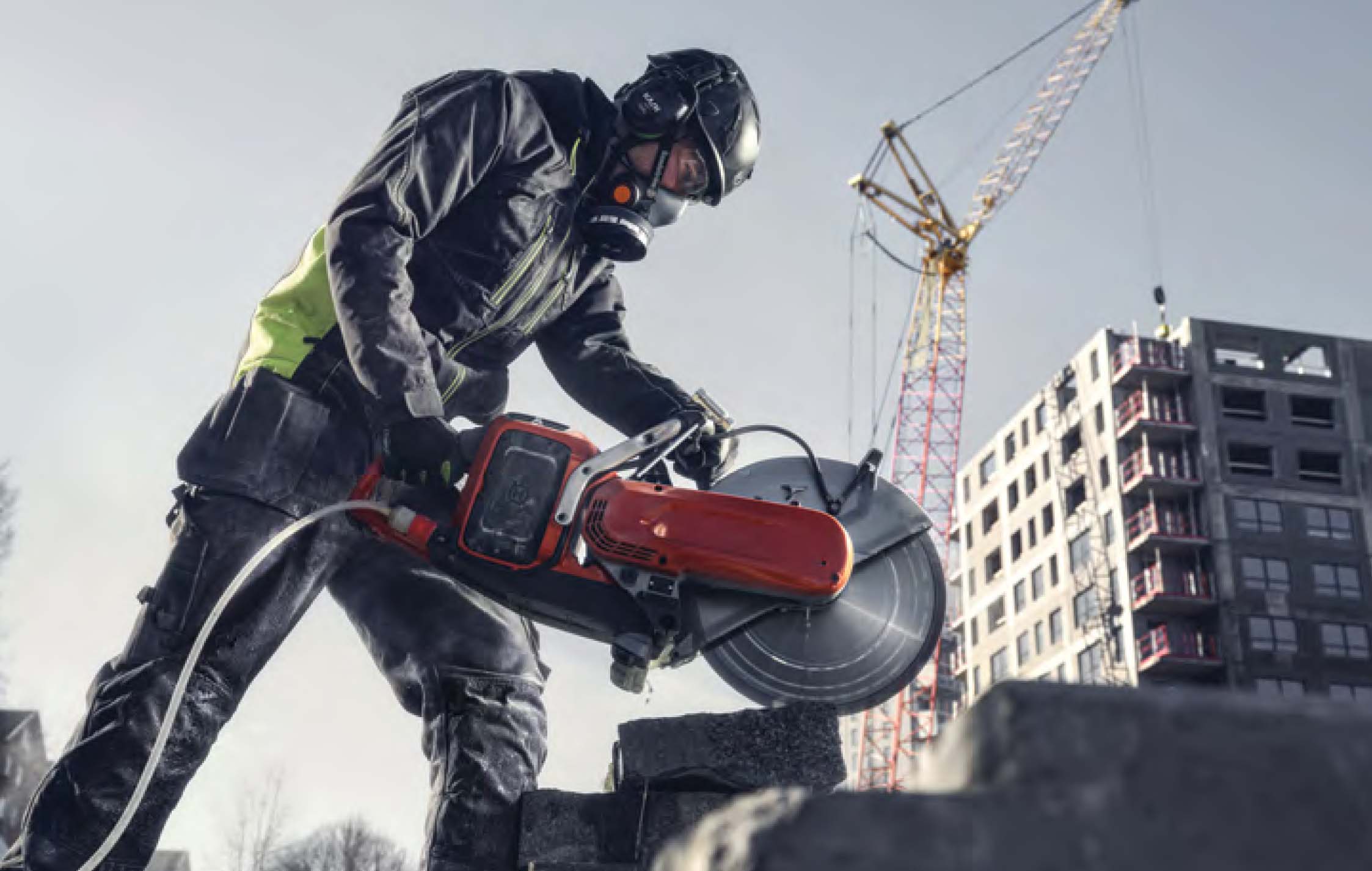
Bit by Bit – Selecting the Right Bit in Concrete Demolition Applications to Maximize Efficiency

By August Scalici and Jeff Keeling
Selecting the right tool for the job at hand is key when it comes to minimizing effort and maximizing efficiency. In concrete demolition, this begins with the carrier. Contractors must determine which machine provides the power- to-weight ratio needed to get the job done. From heavy-hitting multi-ton excavators to handheld pneumatic devices, there are several options available. However, many contractors are finding success with remote-controlled demolition machines. This equipment offers industry-leading power-to-weight ratios with the versatility and efficiency to master several applications — including indoor and top-down demolition in congested urban areas. The carrier might be a key factor in the efficiency equation, but when it’s time to start the actual demolition everything rests on the tip of the machine. A moil point and a blunt tool will both break concrete, but which one provides the ideal result with minimal effort? Choosing the right bit for the task at hand can increase efficiency, while the wrong choice can slow down productivity or leave behind unsatisfactory results. A contractor who knows the difference can end up with a huge advantage in an increasingly competitive field. Depending on their service offerings, a toolbox full of bits isn’t necessary for every concrete demolition contractor. Here are some tips to help select the right tools to keep on hand to maximize efficiency with remote- controlled demolition machines.
Moil Point
The moil point tool is the most common bit found on jobsites. It’s shaped like a pencil and is ideal for breaking hard concrete reinforced with rebar. This design focuses the entire force of the hammer and carrier in a 1/4-inch point which limits vibrations, making it the ideal option for indoor applications and other situations where vibrations are unacceptable. The moil point is the everyday workhorse of concrete demolition, providing high- efficiency and reliability, and, for that reason, it’s become the standard bit for most new breakers. The moil point offers good control, allowing operators to demolish around rebar with precision and efficiency for applications such as walls, footings, floor foundations or machine bases. However, it does not provide the level of precision necessary for fine detail work. There is also a risk the cone- shaped head will get stuck when breaking concrete, often the result of material failing to expand fast enough and trapping dust close to the tool, lodging it in place. Paying special attention to the running time of the hammer can help avoid this, though. If the hammer runs for more than 20 seconds in the same spot without noticeable results, the tool should be removed from the hole immediately, otherwise there is a good chance the bit will become stuck. There are several variations of the moil point that can further increase overall efficiency in certain situations. A pyramidal moil point, also known as a “nail head”, for example, provides minor torsion and a wedge effect in four directions, making it more efficient as a dividing tool than a conical moil. This is especially true in tools with a larger diameter. The slight variation in shape also keeps the “nail head” from getting stuck as much as its conical counterpart. However, a lack of knowledge often leaves operators stuck with the traditional cone-shaped moil rather than a tool more appropriate for the job at hand.

Chisel
A chisel tool looks similar to a flat-head screwdriver and is available in standard and wide widths. The chisel provides strong torsion and good penetration, resulting in the best splitting action. It is ideal for trimming applications including floors, walls and foundations, as well as demolishing reinforced columns, supports and blocks. For example, the chisel can be used to clean up between rebar on the edge of a slab to ensure an ideal bonding surface for pouring concrete. This tool also offers the best precision for fine detail work, allowing operators to remove a little concrete at a time, such as shaving down high points or blowouts from slurry walls. The chisel doesn’t offer the versatility of a moil point, but it belongs in every concrete demolition contractor’s toolbox for specialized applications that call for a delicate touch.
Blunt
The blunt tool features a flat face with more surface area to deliver a wider area of impact when breaking slab concrete. It is ideal for floors, steel beams encased in concrete, recycling and certain roadwork applications. What the blunt tool lacks in precision, it makes up for in destructive power. Energy is distributed across the whole face of the tool, covering a significantly larger surface area than pointed tools. This greatly increases overall efficiency. Working with a blunt tool produces vibrations, which might limit its use in certain situations like indoor and top-down demolition and some road and bridge repair applications. However, the vibrations also make this an ideal tool for removing concrete from around steel beams. The vibrations encourage the concrete to walk away from the steel, making it easier to remove. This tool can also be used for bridge beam testing since it can create a pocket just small enough to inspect the steel beam beneath the concrete.
Slab Buster
For inflicting maximum destructive power, the slab buster, or “elephant foot,” is the most appropriate choice. Like the blunt tool, it uses a wider surface area and can double production of both slab and on-grade demolition. The slab buster is shaped like a bell and can distribute energy over a surface area three times its size. The slab buster also creates vibrations and provides very little precision, so it is not ideal for every situation. However, for a thin slab floor with no vibration restrictions, this tool offers maximum demolition efficiency.
The Right Tool for the Job
A little forethought can go a long way toward increasing efficiency when it comes to selecting the right tool for the job. Knowing which bit to use when can speed up production, leaving crews free to move on to the next job that much sooner. For some operations, using a moil point with their remote-controlled demolition machine might be all they ever need, but for those looking to maximize their concrete demolition capabilities, keeping an assortment of tools in their toolbox will increase versatility and efficiency.














